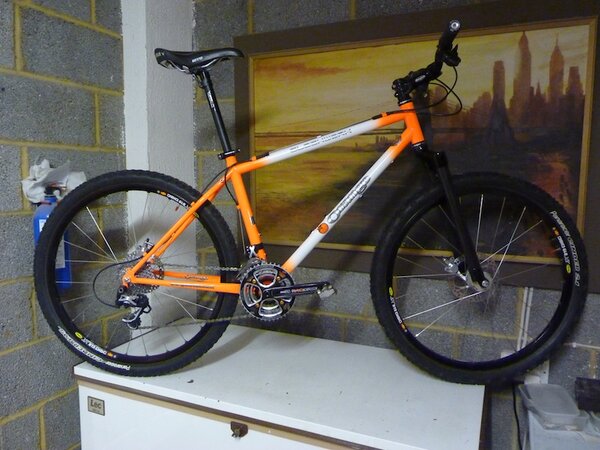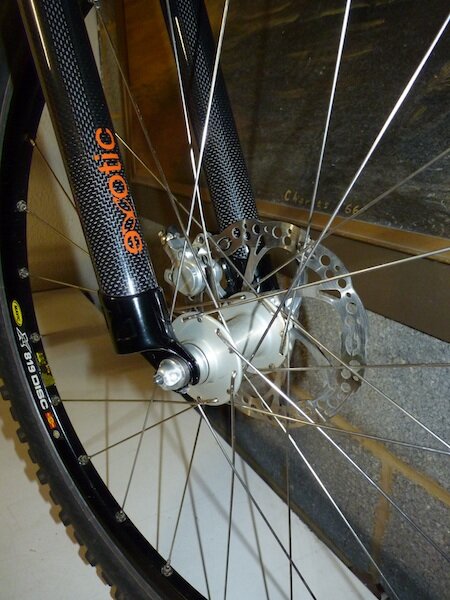Sketchyxup
Retro Guru
For some time iv been playing with the idea of putting a rigid fork on my HT, iv got a full suss as well so will be doing it fo nothing more than a bit of an experiment really.
I was going to get a carbon one but had some reservations about it because im quite heavy and ride fairly hard, now the carbon would probably be fine but it would probably play on my mind.
My HT is a 2010 Saracen Kili titanuim which has more of a trail geometry rather than an out and out XC race geometry, it is designed for a 120mm fork and currently has a fox F120 on it. Ideally I want to maintain this geometry as I like the way it rides so based on my calculation I would need to run a rigid with an axel to crown of 470mm to do this. That is based on the fox having an a/c of 490mm and running 20mm sag would give me a dynamic a/c of 470.
I was thinking of these as a good subsitute to the carbon ones:
http://www.winstanleysbikes.co.uk/produ ... 29er_Forks? gclid=CMeV6dP1zLcCFSXHtAodQUIAsQ
They seem to be an ideal length and the steel should give a nice ride, finally i like the idea of running a pace fork on a saracen frame for the whole british thing. Those forks cant of been out that long as iv not seen them before and have been pondering this for a while?
Thoughts/ opinions please?
I was going to get a carbon one but had some reservations about it because im quite heavy and ride fairly hard, now the carbon would probably be fine but it would probably play on my mind.
My HT is a 2010 Saracen Kili titanuim which has more of a trail geometry rather than an out and out XC race geometry, it is designed for a 120mm fork and currently has a fox F120 on it. Ideally I want to maintain this geometry as I like the way it rides so based on my calculation I would need to run a rigid with an axel to crown of 470mm to do this. That is based on the fox having an a/c of 490mm and running 20mm sag would give me a dynamic a/c of 470.
I was thinking of these as a good subsitute to the carbon ones:
http://www.winstanleysbikes.co.uk/produ ... 29er_Forks? gclid=CMeV6dP1zLcCFSXHtAodQUIAsQ
They seem to be an ideal length and the steel should give a nice ride, finally i like the idea of running a pace fork on a saracen frame for the whole british thing. Those forks cant of been out that long as iv not seen them before and have been pondering this for a while?
Thoughts/ opinions please?

